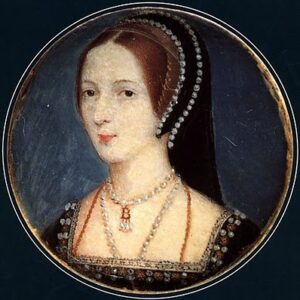 I have just published the latest instalment of my “Questions about Anne Boleyn” series on the Anne Boleyn Files and Tudor Society YouTube channel. This one answers the question “What did Anne Boleyn look like?”.
I have just published the latest instalment of my “Questions about Anne Boleyn” series on the Anne Boleyn Files and Tudor Society YouTube channel. This one answers the question “What did Anne Boleyn look like?”.
In my video talk, I look at Nicholas Sander’s description of her from 1585 and then look at how Anne Boleyn’s contemporaries described her. Was she beautiful? What do they tell us about her colouring?
I also consider what contemporary images we have of her.
I do hope you enjoy it.
Remember that I’m on YouTube live tomorrow, Saturday 23rd February 2019, for a Q&A session on Anne Boleyn. You can find the details here. I hope to ‘see’ you there!